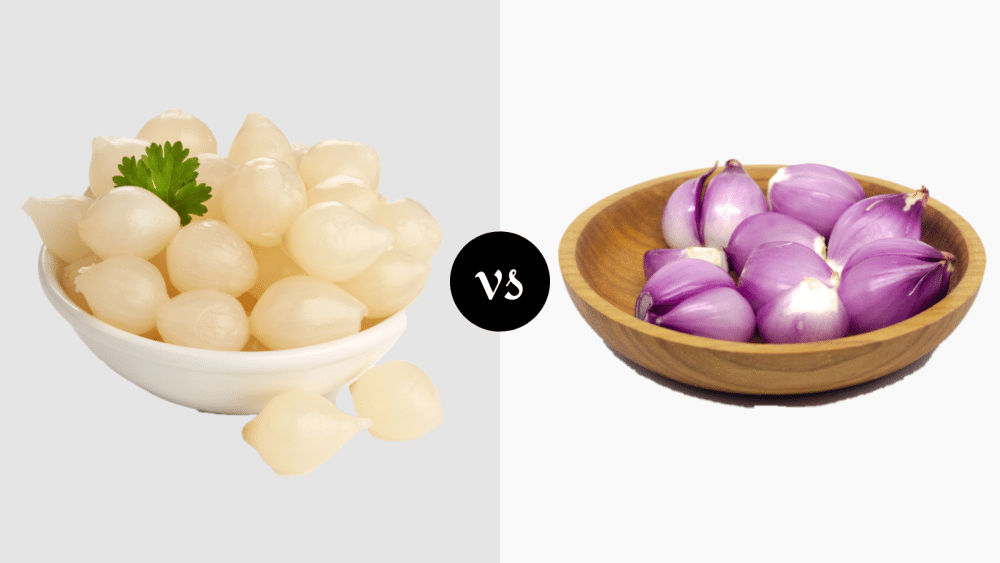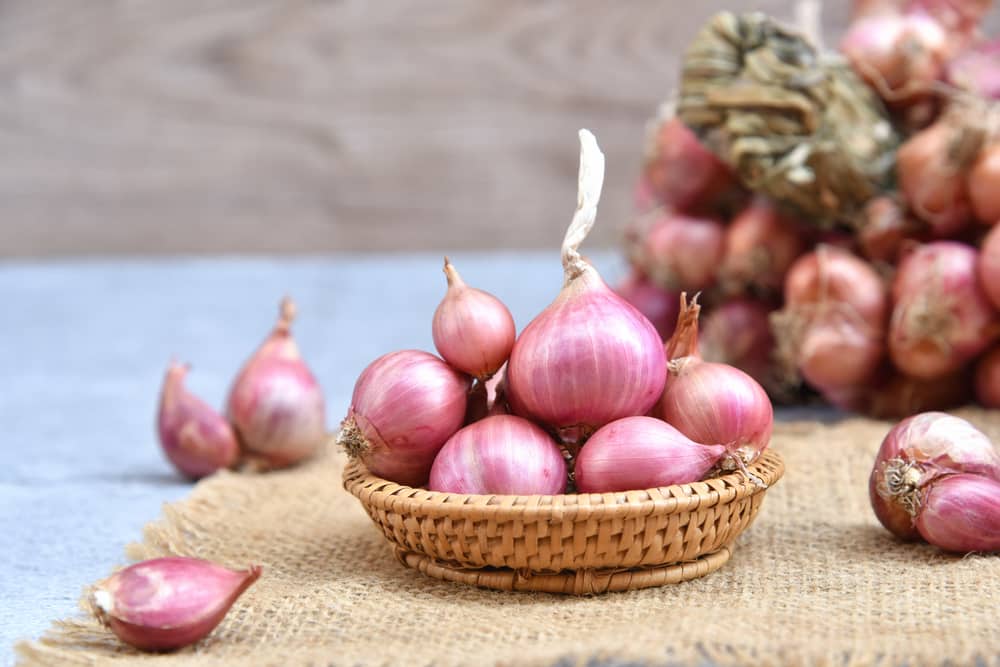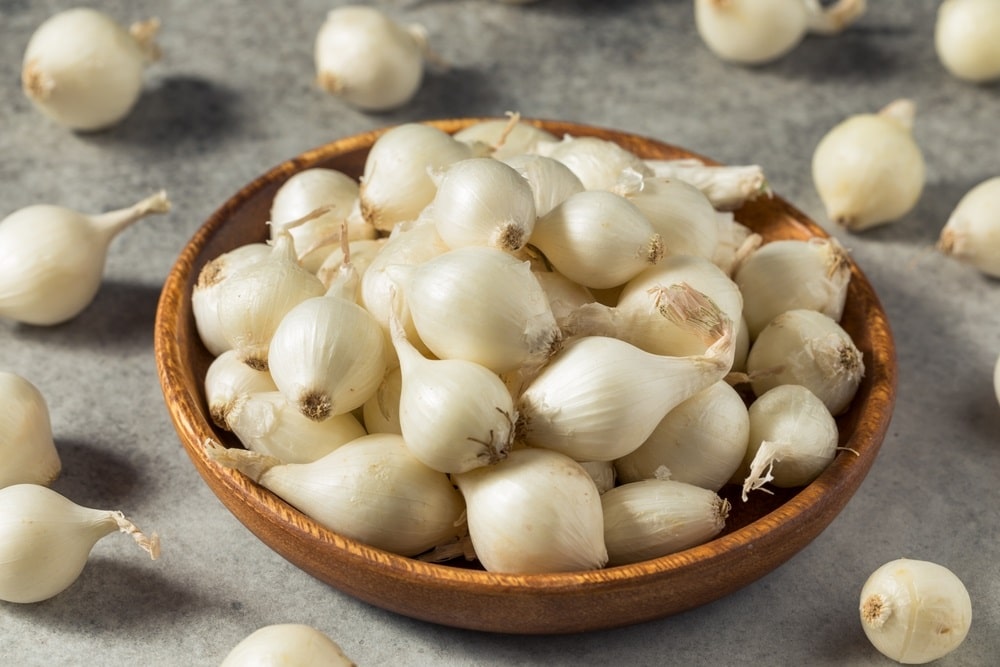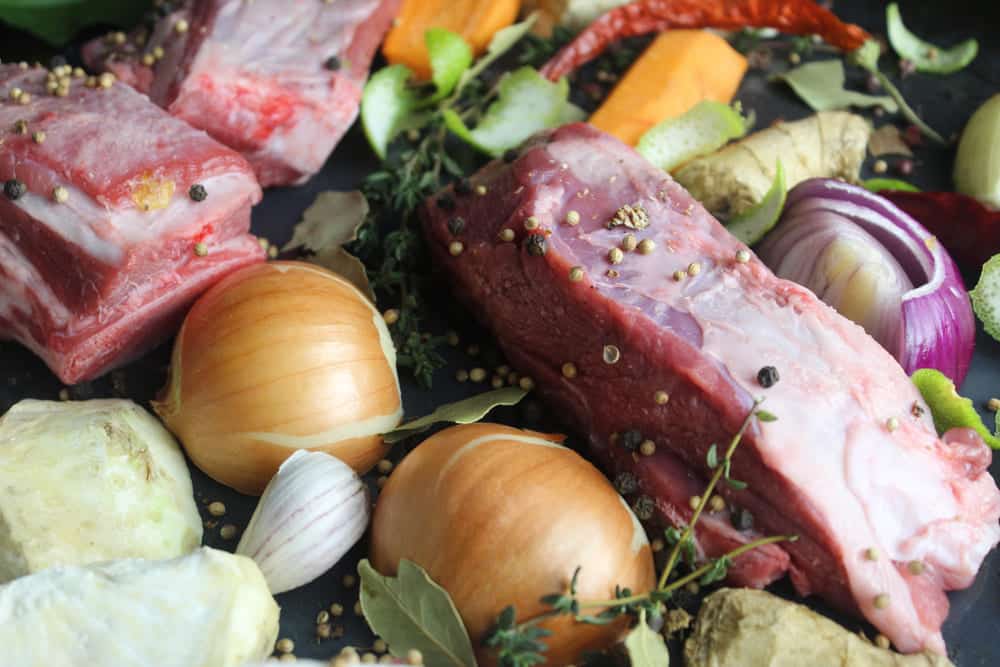
Onions have become an indispensable part of every kitchen as they add an earthy and sweet flavor to cooked recipes. In addition, they add a spicy accent when consumed in raw form.
However, there are different varieties of onions out there, which makes it challenging to know which onions are right for your recipe.
So, to help you understand the differences, we are sharing the comparison between shallots and pearl onions.
Pearl Onions vs. Shallots – The Comparison Table
| Features | Pearl Onions | Shallots |
| Botanical name | Allium cepa | Allium ascalonium |
| Shape | Round | Tapered |
| Colors | White, yellow, and red | Grey, white, brown, purple, and rose |
| Skin | Thin but not papery | Dry, brittle, and papery |
| Growth | Single | In the form of clusters |
Pearl Onions vs. Shallots
1. Shallots
The shallots are widely used in French cuisine and are added to classic sauces like mignonette. In addition, they are commonly used in Asian recipes as they are crisp-fried and are ground to make curry paste.
Shallots are available in various sizes and shapes. The western shallots are commonly found in US grocery stores and have a slender and small shape.
Also, these shallots have a lighter color. The botanical name of the shallots is allium ascalonium, and they have a tapered shape.
Appearance
In addition, the western shallots have orange and pinkish papery skin as well as light-purple flesh. On the other hand, the Asian market has Asian shallots, which have deep and dark purple flesh.
Shallots are milder in flavor, but there is a garlic undertone. They are available all year round, but winter storage can intensify the flavor.
When you purchase the shallots, it’s recommended that you look for small and firm ones with shiny skin. They have to be stored in a cool and dark part of the kitchen.
If stored in a dry area, they will remain fresh for over a month. The dry shallots tend to cluster together like garlic. It’s available in different colors, including gray, white, brown, purple, and rose. The shallots don’t have a pungent aroma.
Usage
The thinly sliced shallots can be fried to use as a topping for curry noodles, deviled eggs, and congee. In addition, they can be minced to add flavor and crunch to the vinaigrettes.
The shallots taste amazing in a pan sauce that’s served with roasted chicken. When eaten raw, they can have a sharp taste but make sure you don’t brown them as it can lead to a bitter flavor.
The shallots have a very delicate flavor, which fades away when they are cooked. For this reason, they are consumed in raw form.
2. Pearl Onions
The pearl onions have a sweet flavor and are tiny in size. These onions are available in white, yellow, and red colors, but white pearl onions are the most common.
They have the appearance of regular onions but are sized like a jawbreaker. Compared to bulb onions, pearl onions have a sweeter and milder flavor. Their botanical name is allium cepa, and they have a rounder shape.
Appearance
The pearl onions are mild-flavored, sweet, and small onions. They are available in frozen form as well, which is easier to use. This is because the frozen pearl onions are peeled and ready to be used.
In addition, the pearl onions are available in the jarred form. The onions have a crisp texture as well as a sweet flavor. However, the aroma is extremely pungent.
When the pearl onions are planted, they are tightly packed, which is why they grow around one inch in diameter. When stored in a dark, dry, and cool place, they will remain fresh for over two months.
Usage
The pearl onions can be challenging to peel, especially if you have fresh onions. However, you can blanch the onions in hot water to ensure quick and easy peeling.
The pearl onions can be glazed and creamed with gratin, or you can pickle them and flavor the Gibson cocktail. In addition, the mild flavor makes them suitable for casserole as well.
The pearl onions are sautéed, braised, roasted, and glazed. They are widely used in gratins, soups, stews, and braises.
When you purchase pearl onions, it’s recommended that you look for heavy and firm ones. Also, there must be no dark spots and green shoots.
The Final Verdict
The pearl onions and shallots are the smaller variety of onions, and both are great for people who like a mild flavor. However, the shallots have a hint of garlic and can become bitter when cooked.
For this reason, shallots are recommended for raw consumption, while pearl onions are suitable for cooking recipes.



